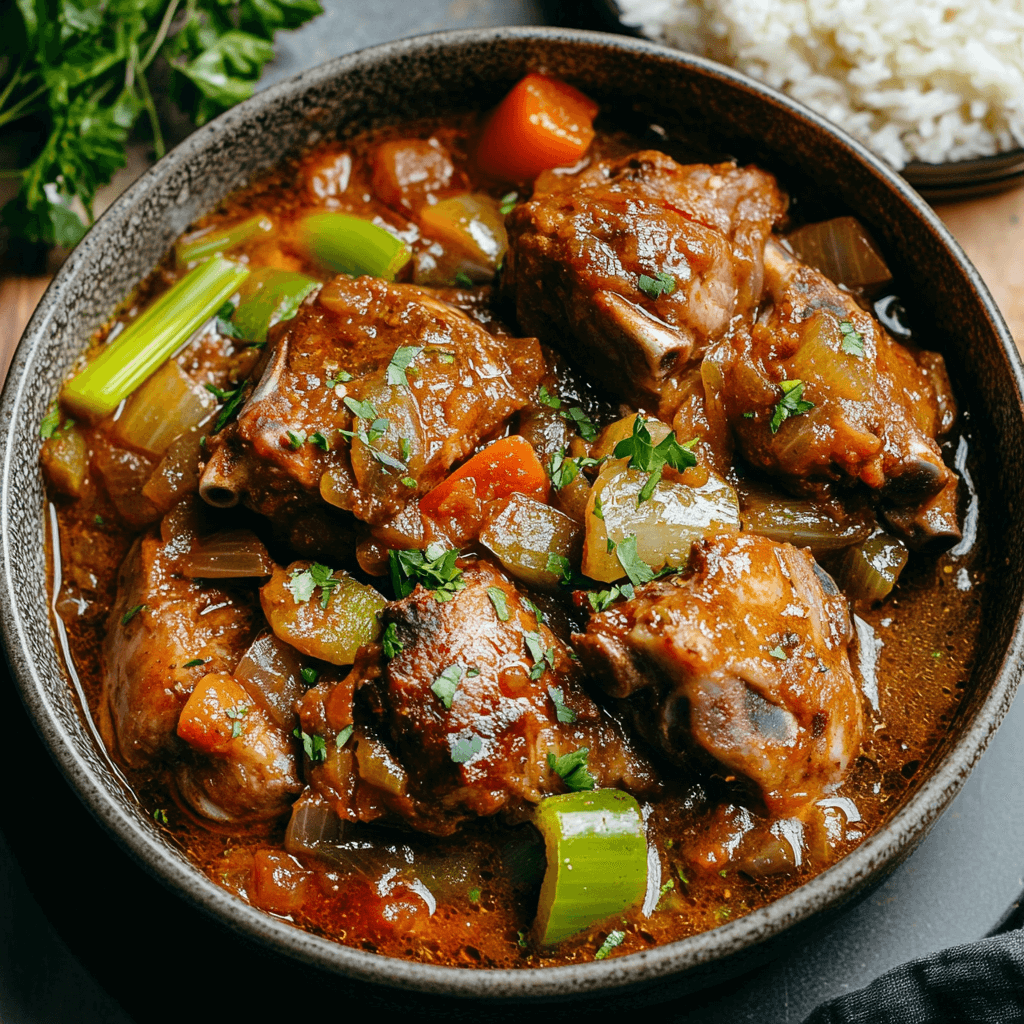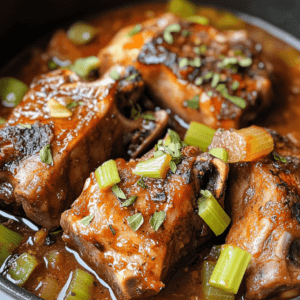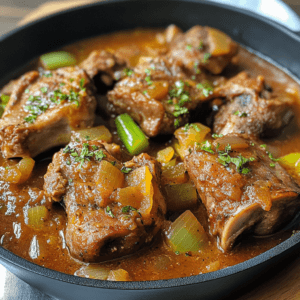Knowing how to clean neckbones before cooking is an essential skill for preparing flavorful and healthy dishes. Proper cleaning ensures that your meal is free from impurities, enhances the taste, and makes the dish more enjoyable. This guide will teach you everything you need to know about how to clean neckbones before cooking, step by step.
Introduction to Cleaning Neckbones
Before diving into the cleaning process, let’s start by understanding what neckbones are and why cleaning them is important.
What Are Neckbones?
Neckbones are a popular cut of meat from the neck of an animal, typically pork or beef. They contain a good amount of meat, cartilage, and bone, making them a flavorful option for slow-cooking methods. Despite being a flavorful and affordable cut of meat, neckbones often come with extra fat, skin, and residue that must be cleaned properly to ensure the best cooking experience.
Why Is Cleaning Neckbones Important?
Cleaning neckbones before cooking is crucial for a few reasons:
- Flavor Improvement: Cleaning removes excess fat, blood, and any bone residue, ensuring a cleaner, more refined flavor in your final dish.
- Health Considerations: Removing any residual dirt or impurities from the meat ensures that the food you prepare is safe to eat and free from harmful bacteria.
- Presentation: Well-cleaned neckbones create a better appearance in your dish and allow the meat to cook more evenly.
With these points in mind, let’s move on to the next step: how to clean neckbones properly before cooking.
How to Clean Neckbones Before Cooking: A Step-by-Step Guide
Cleaning neckbones doesn’t have to be a complicated task, but it does require patience and the right techniques to ensure the best outcome. Here’s a step-by-step guide.
The Importance of Cleaning Neckbones Before Cooking
Before you begin cleaning neckbones, ensure that you have all the necessary tools at hand:
- Cold Water: This helps rinse off any debris without cooking the meat.
- Sharp Knife: Use it for trimming any excess fat or skin.
- Scrub Brush: A soft brush is useful for scrubbing the bones to remove any dirt or residue.
- Cutting Board: It provides a stable surface for trimming and cleaning the neckbones.
- Paper Towels: These are helpful for drying the neckbones after cleaning.
Having these tools ready will make the cleaning process much easier.
Common Mistakes to Avoid When Cleaning Neckbones
Start by rinsing the neckbones under cold running water. This step helps to remove any loose dirt, blood, and other debris that may have accumulated during the butchering process.
Using Cold Water for the Best Results
Cold water is the best choice for rinsing neckbones. Hot water may cause the meat to start cooking or lose its flavor, which is why it’s essential to stick with cold water during the cleaning process. Hold the neckbones under the stream of cold water, gently scrubbing with your fingers to remove any remaining impurities.
Ensuring All Debris Is Removed
Take your time during this step to ensure that all debris is thoroughly washed away. You might want to hold each piece of neckbone in your hands to feel for any remaining dirt or bone fragments that may not have been removed by the rinse.
Removing Excess Fat and Skin
Next, use your sharp knife to remove any visible excess fat or skin from the neckbones. This is an important step because the fat can add unwanted greasiness to the dish, and the skin can become tough when cooked.
Best Techniques for How to Clean Neckbones Before Cooking
To remove the fat, make small, controlled cuts along the edges where fat accumulates. It’s essential to be careful here, as you don’t want to waste any meat. Work around the fat carefully, ensuring that you only remove the fat without affecting the meat.
How to Trim Skin Without Wasting Meat
If you find any skin on the neckbones, use your knife to make shallow cuts along the edge of the skin. You can remove the skin by pulling it away gently with your fingers or using the knife to cut through it. Just be sure to leave the meat intact and don’t take off more than necessary.
Scraping and Scrubbing the Bones
After trimming the fat and skin, it’s time to scrub the bones themselves. Sometimes, neckbones can have some bone residue or leftover connective tissue that needs to be removed.
The Right Tools for Scrubbing Bones
Use a soft-bristled brush or a toothbrush specifically dedicated to cooking to scrub the bones. Gently scrub around the bones, focusing on any rough spots where residue might have collected.
How to Gently Scrape Off Bone Residue
If you notice any stubborn bone residue that can’t be removed with scrubbing, use the edge of your knife to scrape it off. Be gentle to avoid damaging the bones or the meat attached to them.
Common Mistakes to Avoid When Cleaning Neckbones
While cleaning neckbones is straightforward, there are a few common mistakes that many people make. Being aware of these will ensure that your neckbones are cleaned properly every time.
Overwashing the Meat
It’s easy to overdo it when cleaning meat, but washing neckbones too much can strip away the natural flavors. A thorough rinse is sufficient, but excessive washing can lead to a loss of taste and nutritional value.
Not Removing All Residue from the Bones
After rinsing and scrubbing, always check to make sure that no bone residue is left. Scrape any tough spots and double-check that the bones are clean. Neglecting this step can result in an unpleasant texture in your dish.
Using Hot Water Instead of Cold
As mentioned earlier, hot water should be avoided when cleaning neckbones. Hot water can start cooking the meat and alter its texture. Stick with cold water to preserve the meat’s quality.
Best Practices for Storing Cleaned Neckbones
Once the neckbones are cleaned, it’s important to store them properly before cooking, especially if you’re not using them right away.
Storing Neckbones in the Refrigerator
If you plan to use the cleaned neckbones within a day or two, place them in an airtight container and store them in the refrigerator. Make sure they are well-sealed to prevent contamination with other foods.
Freezing Neckbones for Long-Term Storage
For longer storage, freezing is the best option. Wrap the cleaned neckbones tightly in plastic wrap or aluminum foil, then place them in a freezer bag. Label the bag with the date so that you can keep track of how long they’ve been frozen. This will allow you to store them for several months.
Tips for Cleaning Neckbones Effectively
Cleaning neckbones properly not only makes your dish healthier but also improves the cooking process. Clean neckbones contribute to better flavor, texture, and overall quality.
Tools You Need for Cleaning Neckbones
When neckbones are cleaned thoroughly, they absorb seasonings better, and the resulting broth or sauce will be richer and cleaner. The removal of excess fat and residue ensures that you aren’t left with any unwanted greasy or gritty flavors in your dish.
How Cleaning Neckbones Enhances Flavor
Clean neckbones are ideal for slow cooking methods like braising, stewing, and boiling. Because they have less fat and residue, they will cook more evenly, and the meat will tenderize properly. Whether you’re making neckbone soup or a slow-cooked stew, cleaning the neckbones ensures a better outcome.
Health and Safety Considerations
While preparing neckbones, it’s important to follow food safety guidelines to ensure your dish is safe to eat.
Storing Cleaned Neckbones Safely
Always wash your hands thoroughly before and after handling raw meat. Raw neckbones can carry harmful bacteria, so it’s essential to avoid cross-contamination by cleaning your cutting board, knife, and any utensils used during the process.
Sanitizing Tools and Surfaces After Cleaning
After cleaning the neckbones, it is essential to disinfect your tools and surfaces to maintain food safety and prevent bacteria buildup. Wash cutting boards, knives, and countertops with hot soapy water, ensuring all residue is removed. For added safety, use a food-safe sanitizing solution to thoroughly clean all surfaces that came into contact with the raw meat. This step is especially important when handling raw meat to minimize the risk of cross-contamination and ensure a safe cooking environment.
Frequently Asked Questions About Cleaning Neckbones
How Do You Know When Neckbones Are Clean Enough?
Neckbones are considered clean enough when there is no visible residue left on the bones, no excess fat or skin clinging to the surface, and the meat appears fresh and ready for cooking. To ensure cleanliness, you can also lightly touch the surface with your fingers—there should be no gritty particles or dirt. Taking these steps will help you prepare neckbones that are both hygienic and ideal for your dish.
Can You Clean Neckbones in Advance?
Yes, you can clean neckbones in advance. After cleaning, ensure they are stored properly to maintain freshness. Place the cleaned neckbones in an airtight container or tightly wrap them in plastic wrap, then store them in the refrigerator if you plan to use them within a day or two. For longer storage, place them in the freezer to keep them fresh until you are ready to cook. Proper storage helps preserve their quality and flavor.
What Can You Use Instead of Neckbones in Recipes?
If neckbones are not available, you can substitute them with other cuts of meat, such as pork hocks, oxtails, or beef shank. These alternatives provide similar flavors and textures, making them suitable for a variety of recipes that call for neckbones. Each substitute brings its own unique qualities to the dish while still delivering the rich, hearty taste and satisfying texture typically associated with neckbones.
How Do You Remove Stubborn Residue from Bones?
If you encounter stubborn residue on neckbones, use a knife to carefully scrape it off. Alternatively, you can soak the neckbones in cold water for a few minutes to help loosen the residue, making it easier to remove. After soaking, scrub the neckbones gently to ensure they are clean and ready for cooking. This process helps maintain the integrity of the meat while ensuring it is free of unwanted debris.
Should You Wash Neckbones in Hot Water?
Always use cold water when washing neckbones to prevent the meat from cooking prematurely, which can result in a loss of flavor and affect the quality of your dish. Cold water ensures that the cleaning process removes impurities without starting the cooking process. This simple step helps retain the neckbones’ natural juices and enhances the overall taste of the meal you’re preparing.
Is It Necessary to Trim Fat and Skin?
Trimming fat and skin from meat or poultry is often recommended for achieving a cleaner, leaner, and healthier dish, as it reduces the overall fat content and can make the final meal lighter and more appealing to those watching their fat intake. However, this step is not strictly necessary and largely depends on your personal preference, dietary goals, and the specific cooking method you plan to use.
For example, leaving the skin on poultry can enhance flavor and texture, as it tends to crisp up beautifully during roasting or grilling, providing a satisfying crunch and helping to lock in moisture. Similarly, keeping some fat on cuts of meat can contribute to a richer, juicier dish, especially in methods like braising or slow-cooking, where the fat renders down and infuses the dish with flavor.
Ultimately, whether you choose to trim the fat and skin or leave them intact depends on the balance of taste, texture, and health considerations you want to prioritize. Each approach has its benefits, and experimenting with both can help you decide what works best for different recipes and occasions.
Conclusion: Mastering the Art of Cleaning Neckbones
Cleaning neckbones before cooking might seem like a tedious task, but it’s a crucial step for enhancing the flavor, texture, and safety of your dish. By following the proper techniques, avoiding common mistakes, and practicing good food safety habits, you can ensure that your neckbones are ready to be turned into a delicious and satisfying meal.
Related article:
Perfect Roast Beef Sliders Recipe for Every Occasion



